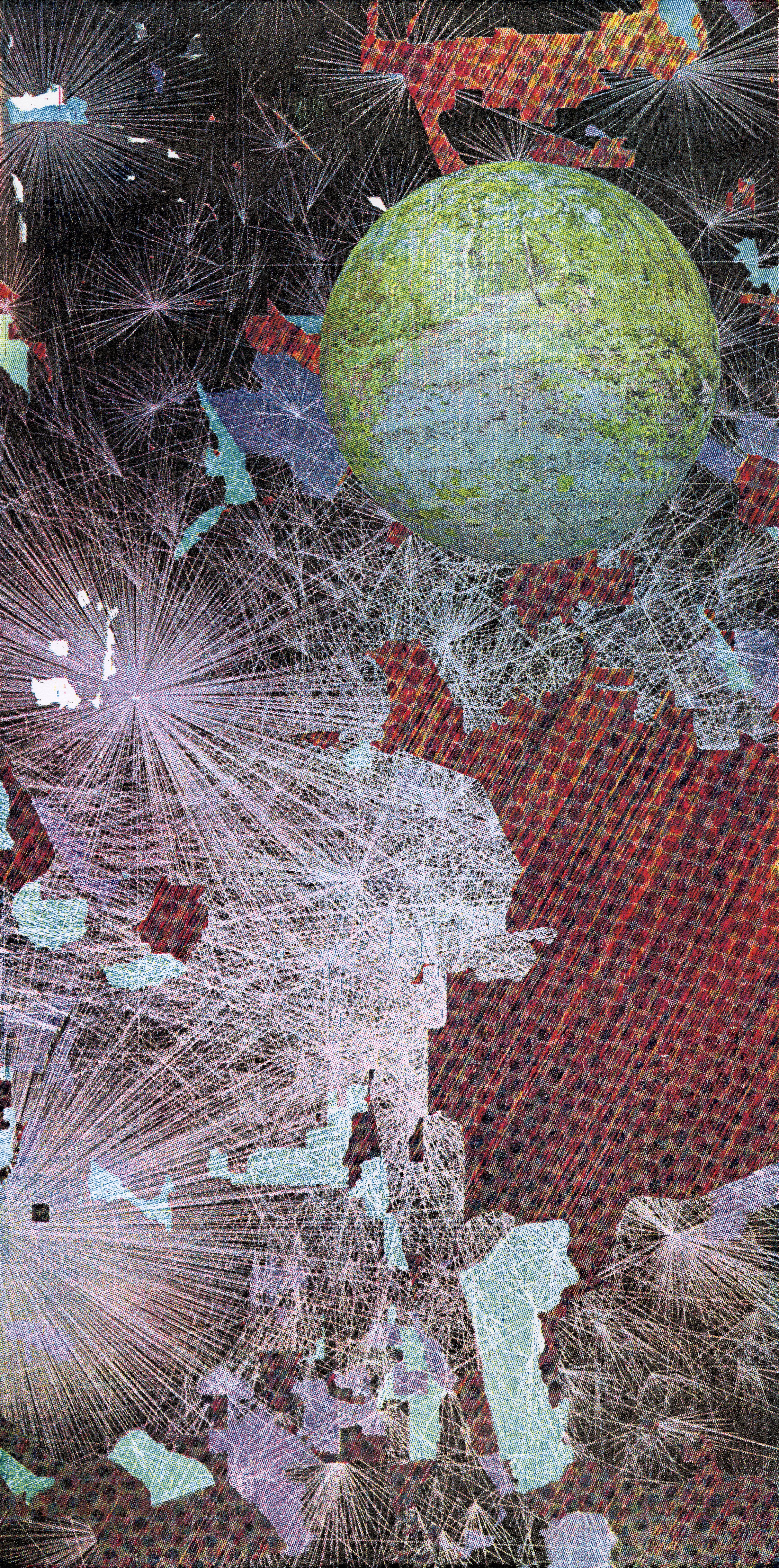
Ebenezer Swamp: Communal Backbone
21x12", Process Color Relief Print, Audio, VR Imagery, 2024
This print was largely inspired by the networks that make the digital and physical paths of the swamp possible.
My first experience with Ebenezer Swamp was during a biology class when I was a student at Montevallo. The swamp was introduced as a place of research and we were told we shouldn’t disturb the environment. Being restricted from the swamp caused me to lose all interest. Later, the footpath and boardwalk were created. Once those public pathways were opened, my experience changed. I was able to serve as a print assistant on a collaborative art project between Judy Major-Girardin and Scott Stephens. The preserve became a space that I could engage with, expand my understanding of my local environment, and further my arts practice. With this piece, I wanted to acknowledge the significance of the pathway leading into the swamp. The initial panorama and the dominant sphere in the final print are the footpath leading into and out of the swamp.
The remaining imagery for the piece is more abstract. I wanted to find and represent other networks that made the interactions between these digital and physical spaces possible. The mid-ground is a composite of different networks that make the existence of the physical swamp and digital spaces about the swamp possible. It’s a combination of different maps of waterways, geography, roadways, internet service provider network maps, and graphical representations of network access points and data routes that make up the backbone of the internet within the United States. The texture in the background is a physical representation of the various social network contents that inspired my initial search at the start of the project.
I have an ambivalent relationship with social media. At times I am appreciative of the connections and information at my immediate disposal. For example, much of the advice that I received about printing my laser engraved plates for this project came from online communities. Other times, I feel like social media is one of the worst things we ever created. We commodify information, force it into strictly economic spaces, distort our perceptions of ourselves and our reality, and rank everything by popularity and engagement versus accuracy or consensus. To mimic this I recorded myself reading social media posts and reviews from different online platforms about the Ebenezer Swamp. I took that audio of me speaking and ran it through an audio visualizer. This created an image that showed the frequency (pitch, how high or low the sound is) as well as amplitude (how loud the sound is) of the social media content. I then ran this visual through a pixel sorting algorithm that prioritized high tones, low tones, and intensity. The visual result was very similar to some of the more toxic environments we find online. The loudest and more extreme sounds were prioritized over everything else. These sounds had a greater clarity and focus at the top of the composition. While the middle and average volume tones are left to muddle at the bottom.


